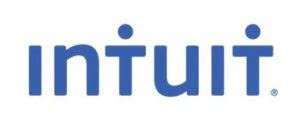
Most companies will have these two-line items on their balance sheets because they’re part of ongoing current and long-term operations. Lease payments are a common type of other liability in accounting. These are the periodic payments made by a lessee (the business) to a lessor (property owner) for the right to use an asset, such as property, plant or equipment. In accounting terms, leases can be classified as either operating leases or finance leases. An operating lease is recorded as a rental expense, while a finance lease is treated as a long-term liability and an asset on the balance sheet.
Accrued expenses

This decision is very crucial as they might still be owing current debts to be paid shortly. For example, A company might go for long-term loans if the market is in its favor. If all hands are on deck, they will make enough profits, which will outweigh their debts and keep them far ahead.
Current Liabilities Examples

The current/short-term liabilities are separated from long-term/non-current liabilities. Liability generally refers to the state of being responsible for something. The term can refer to any money or service owed to another party. Tax liability can refer to the property taxes that a homeowner owes to the municipal government or the income tax they owe to the federal government.
Current vs. non-current liabilities

It can be real like a bill that must be paid or potential such as a possible lawsuit. A company might take out debt to expand and grow its business or an individual may take out a mortgage to purchase a home. Let’s look at a historical example using AT&T’s (T) 2020 balance sheet.
- In summary, other liabilities in accounting consist of obligations arising from leases and contingent liabilities, such as lease payments, warranty liabilities, and lawsuit liabilities.
- This article aims to expand your knowledge about the definition, type of liabilities, and various examples of liabilities.
- That said, if the lawsuit isn’t successful, then your business would not have any liability.
- In accounting, operating expenses are recorded as liabilities until they are paid off.
- By incorporating potential liabilities into cash flow forecasts, businesses can ensure they have adequate funds available to meet their obligations as they arise.
- Liabilities are carried at cost, not market value, like most assets.
Accounts payable, also called payables or AP, is all the money you owe to vendors for things like goods, materials, or supplies. The dance between what we own and owe is the rhythm of enduring business success. So, as you flip through your financial statements, approach liabilities not as burdens, but as tools — each with a potential to mold the future of your business. That “someone else” could be your customers or clients, government agencies, or various lenders, vendors, or credit card companies. Sometimes liabilities are easy to identify, such as in the case of a bank loan or credit card balance. Sometimes, they are less obvious, such as when a client or customer purchases an annual subscription or service.

They are current liabilities, long-term liabilities and contingent liabilities. Current and long-term liabilities are going to be the most common ones that you see in your business. Liabilities are nothing but payments due to those you owe money to.
Position on Balance Sheet
Many of these are simple and may not affect cash flow much, such as the obligation to provide access to software for a year, while others can be more severe, such as lender restrictions. On the other hand, higher capital ratios may indicate that a business isn’t making what falls under liabilities in accounting good use of its assets. Here is a list of some of the most common examples of current liabilities. A robust credit history separates finances, enhances credibility, and unlocks diverse financing. It offers negotiating power, limits liability, and fosters growth.
- If they are found to be guilty, they would have to pay for damages.
- If the ratio of current assets over current liabilities is greater than 1.0, it indicates that the company has enough available to cover its short-term debts and obligations.
- An operating lease is recorded as a rental expense, while a finance lease is treated as a long-term liability and an asset on the balance sheet.
- This is why it’s critical to understand the differences between current and long-term liabilities.
- Accountants call the debts you record in your books “liabilities,” and knowing how to find and record them is an important part of bookkeeping and accounting.